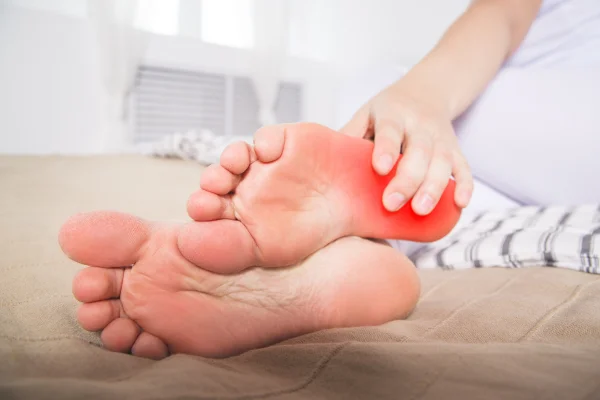Heel pain can be a frustrating and debilitating condition that affects your daily life, making even simple activities like walking a painful experience. Whether you’re dealing with plantar fasciitis, Achilles tendinitis, or another condition, stretching can be an effective way to alleviate pain and prevent future injuries. In this article, we’ll explore various heel pain stretches that can help you find relief, improve flexibility, and strengthen the muscles around your feet.
Heel pain is a common issue that affects millions of people worldwide. Whether you’re an athlete, a busy professional, or someone who enjoys long walks, heel pain can disrupt your routine and lower your quality of life. The good news is that with the right stretches and exercises, you can alleviate much of the discomfort and return to your regular activities.
Understanding Heel Pain Causes

Heel pain can be caused by various conditions, with the most common being plantar fasciitis and Achilles tendinitis. Plantar fasciitis occurs when the thick band of tissue running along the bottom of your foot becomes inflamed, leading to sharp pain in the heel. Achilles tendinitis, on the other hand, affects the tendon that connects your calf muscles to your heel, causing pain and stiffness. Other causes may include stress fractures, heel spurs, or nerve irritation.
Benefits of Stretching for Heel Pain
Stretching plays a crucial role in managing and preventing heel pain. It helps to:
- Increase Flexibility: Regular stretching keeps your muscles and tendons flexible, reducing the risk of injury.
- Relieve Tension: Stretches alleviate tension in the muscles and tendons around the heel, reducing pain.
- Improve Circulation: Stretching improves blood flow to the affected area, promoting healing.
- Strengthen Muscles: Strengthening exercises that accompany stretches can help stabilize the foot and ankle, preventing future pain.
Top Heel Pain Stretches
Now that you understand the importance of stretching, let’s dive into some specific stretches that can help alleviate heel pain.
Calf Stretch
The calf stretch is one of the most effective stretches for heel pain, especially if you’re dealing with Achilles tendinitis or plantar fasciitis.
How to Do It:
- Stand facing a wall with your hands placed on the wall at shoulder height.
- Step one foot back, keeping it straight, and press the heel into the ground.
- Bend the front knee while keeping the back leg straight and hold the stretch for 20-30 seconds.
- Switch legs and repeat.
This stretch targets the calf muscles, which can become tight and pull on the heel, causing pain.
Plantar Fascia Stretch
Stretching the plantar fascia directly can provide immediate relief, especially if your pain is most severe in the morning.
How to Do It:
- Sit on a chair and cross one leg over the other.
- Grab the toes of your affected foot and gently pull them toward you.
- Hold the stretch for 15-30 seconds.
- Repeat 2-3 times.
This stretch helps to loosen the plantar fascia, reducing the strain on your heel.
Achilles Tendon Stretch
The Achilles tendon stretch targets the area where the tendon attaches to the heel, helping to relieve pain and prevent future injuries.
How to Do It:
- Stand on a step or curb with your heels hanging off the edge.
- Slowly lower your heels down, feeling the stretch in your Achilles tendon.
- Hold for 15-20 seconds and then raise your heels back up.
- Repeat this 2-3 times.
This stretch is particularly useful for athletes and runners who are prone to Achilles tendinitis.
Towel Stretch
The towel stretch is a gentle way to stretch the bottom of your foot, making it ideal for early morning pain relief.
How to Do It:
- Sit on the floor with your legs straight out in front of you.
- Loop a towel around the ball of your foot and hold the ends with both hands.
- Gently pull the towel toward you, stretching the bottom of your foot.
- Hold for 20-30 seconds and repeat 2-3 times.
This stretch helps to loosen the muscles and tendons in your foot, reducing heel pain.
Foot Flexibility Exercises
In addition to stretching, incorporating flexibility exercises into your routine can help keep your feet strong and limber.
Ankle Circles:
- Sit on a chair with your feet off the ground.
- Slowly rotate your ankle in a circle, first clockwise, then counterclockwise.
- Repeat for 10-15 seconds on each foot.
Toe Stretch:
- While sitting, spread your toes as wide as possible.
- Hold the stretch for 5 seconds and then release.
- Repeat 10 times on each foot.
These exercises enhance flexibility in the foot and ankle, reducing the likelihood of future heel pain.
Tips for Effective Stretching
To get the most out of your stretching routine, keep these tips in mind:
- Warm Up First: Always warm up your muscles with light activity before stretching.
- Don’t Overdo It: Stretch to the point of mild tension, not pain.
- Be Consistent: Regular stretching is key to long-term relief.
- Listen to Your Body: If a stretch causes pain, stop and consult a healthcare professional.
When to See a Doctor
While stretching can be highly effective for managing heel pain, it’s important to know when to seek professional help. If your pain persists despite regular stretching, or if you experience swelling, severe pain, or difficulty walking, it’s time to consult a doctor. They may recommend further treatments such as physical therapy, orthotics, or in some cases, surgery.
Common Myths About Heel Pain
There are many misconceptions about heel pain, so let’s clear up a few:
- Myth: Heel pain will go away on its own.
- Fact: While some cases of heel pain may resolve with rest, others require treatment and stretching.
- Myth: Only athletes get heel pain.
- Fact: Heel pain can affect anyone, regardless of their activity level.
- Myth: Stretching isn’t necessary if you’re not in pain.
- Fact: Regular stretching can prevent heel pain from occurring in the first place.
Conclusion
Heel pain doesn’t have to control your life. By incorporating these simple yet effective stretches into your daily routine, you can find relief and prevent future discomfort. Remember, consistency is key, and listening to your body will help you avoid injury. If your pain persists, don’t hesitate to seek professional medical advice.
Frequently Asked Questions (FAQs)
How Often Should I Do Heel Pain Stretches?
It’s recommended to perform these stretches daily, especially in the morning and after long periods of inactivity.
Can Heel Pain Be A Sign Of A More Serious Condition?
Yes, in some cases, heel pain can indicate conditions such as stress fractures or nerve issues. If your pain is severe or persistent, consult a doctor.
Are There Any Exercises I Should Avoid If I Have Heel Pain?
Avoid high-impact activities like running on hard surfaces if you’re experiencing heel pain. Focus on low-impact exercises like swimming or cycling.
Can Wearing The Wrong Shoes Cause Heel Pain?
Absolutely. Wearing shoes that lack proper support can contribute to heel pain. Opt for footwear that provides good arch support and cushioning.
How Long Does It Take To See Results From Stretching?
Results can vary, but many people notice a reduction in pain within a few weeks of consistent stretching.

